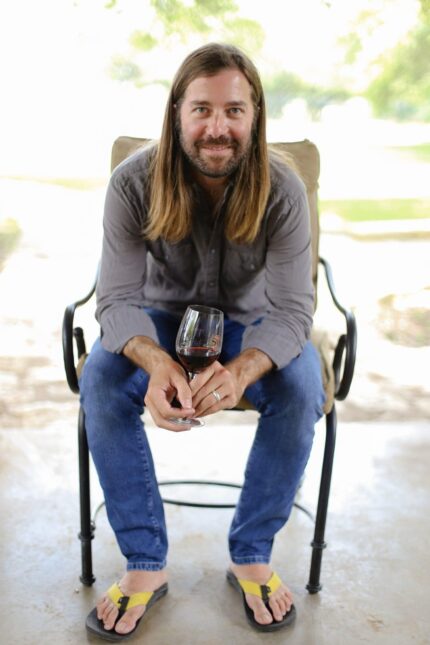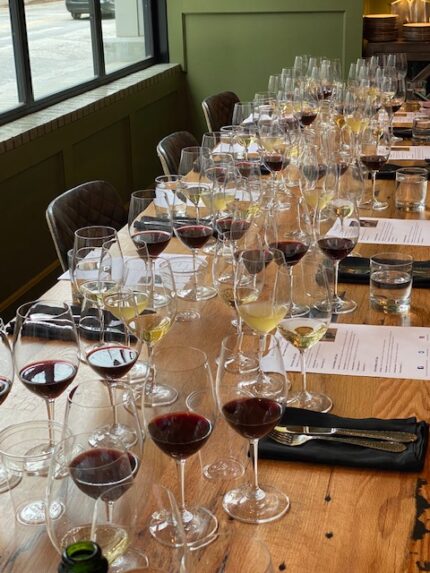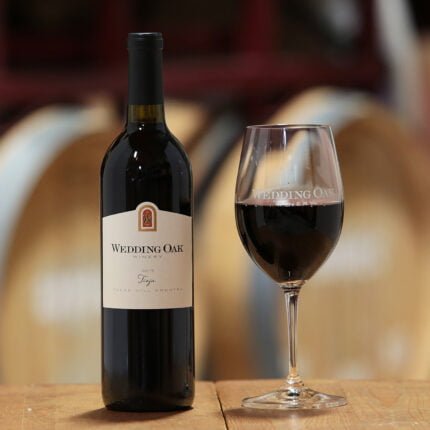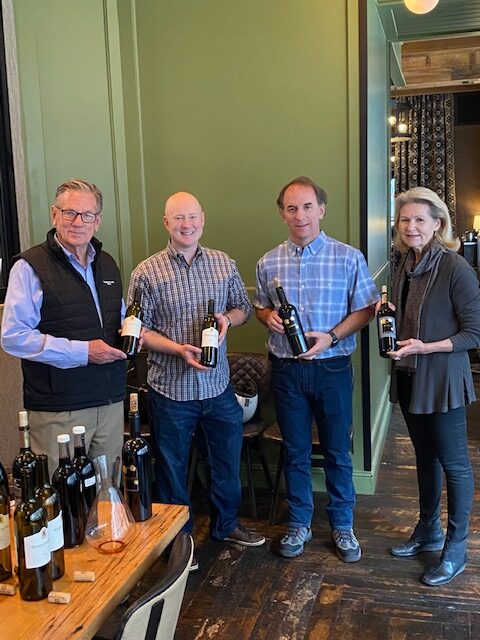
A few months ago, I was asked the question if Texas wine was appropriate for aging. I didn’t have the answer outright. While I currently have several older Texas wines in my collection, I do not have them in a vertical format.

Thanks to the winemakers and winery owners of Fall Creek Vineyards, Ron Yates, and Wedding Oak Winery I had the experience to try aged Texas wines earlier this week at Haywire Restaurant in Uptown. Each winery shared information about their wines as we tasted wine futures with barrel samples, current releases, and library wines. It was my first comparative tasting showing the progression of wine as it ages from pre-bottling to current releases, to time in spent in the cellar. All the winemakers from each winery talked about each wine and its age worthiness.
In the past, I’ve had the chance to write about the great wines for each of these vineyards – Fall Creek Vineyards, Spicewood Vineyards and Wedding Oak Winery.

We tried over twelve wines grouped by each winery’s selection and what they wanted us to taste showing what happens with the gift of time. My overall impression was the right Texas wine kept in the right condition ages beautifully. And these will be very different wines depending on what happened that year in the vineyard. This doesn’t endorse that every Texas wine will age well as we know many early wineries had a rockier start, but here is what was shared with us that day starting with a future, followed by a current and finally a past representation from each winery:

Wedding Oak Winery, represented by Winemaker Seth Urbanek and Managing Partner Mike McHenry who showed us the winery’s interpretation of Rioja, but with a Texas twist.
First, we had a barrel sample of their 2020 Tioja, 94% Tempranillo and 6% Garnacha. This was much more fruit forward with lots of aromatics.
Then we moved to the current vintage, the 2019 Tioja, which is 82% Tempranillo, 8% Garnacha, 6% Mazuelo, 3% Graciano, and 1% Monastrell. It was more muted with blackberry, cassis, leather, and spice.
We also tried a 2013 Tioja, a library wine, which was a blend of 74% Tempranillo, 15% Tannat, and 11% Cabernet Sauvignon. Definitely softer with less fruit and more acidity.
Ron Yates Wines and Spicewood Vineyards with Ron Yates, Owner and President of both wineries. I’ve written about Spicewood Vineyards before Ron Yates Wines was created in 2016 to focus on fruit across the state.
It was a treat to try the yet to be released 2020 Ron Yates, Friesen Vineyards Tempranillo, Texas High Plains, which is a fruit-driven Rioja wine. It’s savory with red and black plums, dark cherry, spice, and earth. It’s made in the style of a grand reserve Rioja.
We moved to the 2017 Spicewood Vineyards Tempranillo, Spicewood Estate Vineyard, Texas Hill Country, which is aged about two years longer than most wineries. It’s 100% Tempranillo and had notes of stewed tomatoes, stewed plums, black cherry, earth, spice, and cocoa.
Our past representative vintage was a library release of a 2012 Spicewood Vineyards Tempranillo, Spicewood Estate Vineyard, Texas Hill Country. A blend of 95% tempranillo and 5% cabernet sauvignon. Aged for 18 months in 40% new French oak and 60% neutral oak.

I always love seeing Ed and Sue Auler from Fall Creek Vineyards, founders and owners, and Sergio Cuadra, Director of Winemaking. They have been one of the pioneering families in Texas winemaking and were one of the founding families in 1975. They hired André Tchelistcheff, one of the most influential winemakers as a consultant. Ed planted the estate vineyard with Bordeaux grapes and helped petition the Texas Hill Country AVA, which was granted in the 1990’s.
Meritus was basically their take on meritage, which was the highest end wine offered from the winery until Ex Terra was introduced in 2018.
We started with the 2021-barrel sample, a blend of 50% Cabernet Sauvignon and Merlot. Bordeaux style with notes of chocolate, mocha, herbs, and black cherry.
We tried the current release – the 2018 Meritus, which was 50% Merlot, 37.5% Cabernet Sauvignon, and 12.5% Petit Verdot. I tasted berries, cassis, spice, and cinnamon. It was elegant and told a story of its sense of place.
The past library release was a 2012 Meritus, a blend of 55% Cabernet Sauvignon and 45% Merlot blend. For a Texas wine that was this old, it had an intensity that was still developing. It was a beautiful wine with the promise of more to come in terms of complexity and elegance.
So, the question posed to me in the beginning – can Texas wine age? Yes, the right wines can flourish with gift of time. The challenge for winemakers is if consumers have the patience it takes to allow them to do so.
There are a lot of Texas wines out there. If you want to follow along on a journey to find out which wines are built for aging, Andrew Chalk from the Chalk Report is doing a series of tastings of Texas wines all over 10+ years old to see how they are developing.



